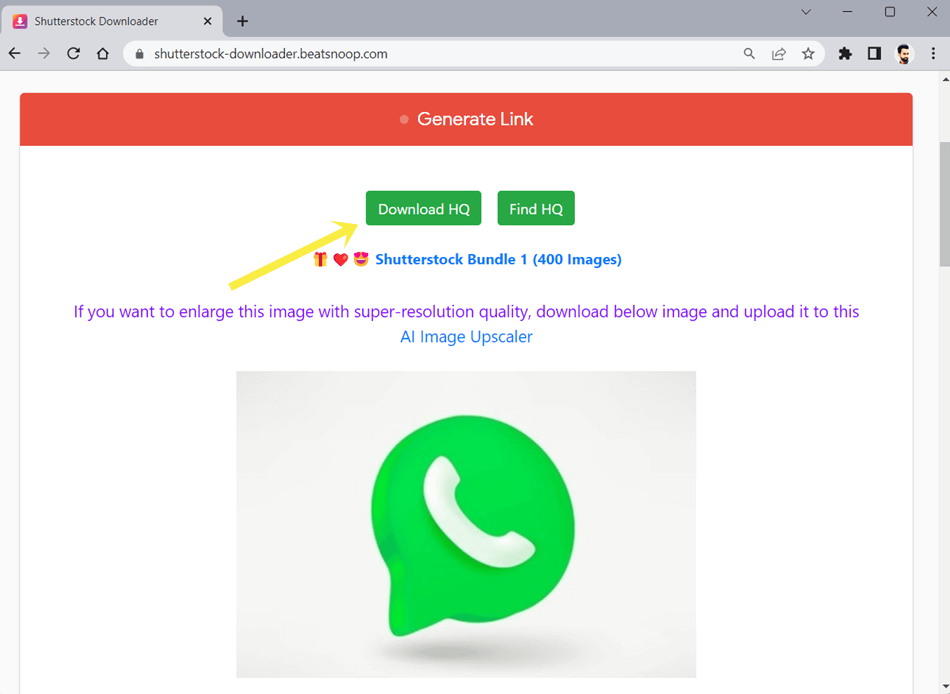When you’re working on a project—be it a blog, presentation, or social media post—finding the perfect image can make all the difference. Shutterstock is a popular platform offering a vast library of high-quality images, but there’s a catch: these images are protected by copyright and require a license to use legally. Licensing ensures that creators get proper credit and compensation for their work. It’s important to understand how Shutterstock‘s licensing works so you can use images appropriately and avoid potential legal issues. In this section, we’ll break down what licensing means and why respecting copyright is crucial.
Legal Risks of Downloading Shutterstock Images Without Permission

Trying to get Shutterstock images for free by downloading without paying might seem tempting, but it comes with serious legal risks. First off, copyright infringement is a violation of intellectual property laws, and using protected images without permission can lead to lawsuits, hefty fines, and even criminal charges in some cases. Companies and photographers invest time and effort into creating these images, and they have the legal right to control how their work is used. If you’re caught using images illegally, you could face:
- Legal action: Lawsuits that demand damages and cease-and-desist orders
- Financial penalties: Paying hefty fines or settlement fees
- Reputation damage: Your brand or personal reputation might suffer due to unethical practices
- Content removal: Your content could be taken down or blocked, impacting your project or business
Moreover, search engines and social media platforms are becoming more vigilant about copyright violations. They can remove infringing content or even suspend accounts that repeatedly violate copyright laws. Ultimately, while it might seem easier or cheaper to bypass licensing, the risks far outweigh the benefits. The best approach is to use images legally—either through proper licensing, free alternatives, or creating your own visuals. Playing it safe not only keeps you out of legal trouble but also supports artists and photographers who put their creative work out into the world.
Understanding Free Alternatives and Legal Resources for Stock Images
When you’re on the hunt for images to spice up your project, blog, or presentation, it’s tempting to look for quick and easy solutions. But it’s super important to understand the difference between free images and copyrighted content. Not all images found online are free to use, and using copyrighted images without permission can land you in hot water.
Fortunately, there are plenty of legitimate sources that offer free stock images, often under licenses that allow you to use them for personal or even commercial purposes. Knowing where to look and what to look for can save you from legal trouble and ensure you’re respecting creators’ rights.
Legal Resources for Stock Images
- Creative Commons Licenses: Many photographers and artists share their work under Creative Commons licenses. These licenses specify how you can use the images—some require attribution, others prohibit commercial use, and some are very flexible. Always check the license details before downloading and using an image.
- Public Domain: Images in the public domain are free to use without restrictions. These are often older works whose copyright has expired or images explicitly released into the public domain by the creator.
- Stock Image Websites with Free Sections: Several reputable sites offer free images legally. Examples include Unsplash, Pexels, and Pixabay. They curate high-quality images that are free to use, often without attribution (but check each site’s licensing terms).
- Government and Educational Resources: Many government and university websites publish images in the public domain, especially historical photos or scientific illustrations.
Why It’s Important to Use Legal Resources
Using images without proper rights can lead to legal consequences, including takedown notices, fines, or even lawsuits. Plus, it’s a matter of respecting creators’ hard work. Many photographers and artists depend on licensing fees or attribution to support their craft. So, always double-check the license, give credit when required, and stick to reputable sources.
Tips for Finding Free High-Quality Images Online
Looking for beautiful, high-quality images doesn’t have to be a daunting or risky task. With the right approach, you can find stunning visuals that fit your needs—and do it legally and ethically. Here are some friendly tips to help you discover the best free images online:
Use Reputable Stock Photo Websites
Start your search on trusted platforms like:
- Unsplash: Known for its vast library of free, high-resolution images contributed by talented photographers.
- Pexels: Offers a wide variety of free images and videos, all under a license that allows for commercial and personal use.
- Pixabay: Contains photos, illustrations, vectors, and videos, all free to use with no attribution required in most cases.
Refine Your Search with Specific Keywords
Be as specific as possible with your search terms. Instead of just searching for “nature,” try “mountain sunrise” or “tropical beach.” This narrows down your options and helps you find images that really match your vision.
Filter by Orientation, Color, or Size
Most stock sites let you filter results based on orientation (portrait or landscape), dominant colors, or image size. This makes it easier to find images that perfectly fit your design or layout.
Pay Attention to License Details
Even on free sites, some images might require attribution or have restrictions. Always read the licensing info or usage rights provided with each image. When in doubt, choose images explicitly labeled for free use without attribution to avoid any issues.
Leverage Social Media and Creative Communities
Platforms like Instagram, Flickr, or DeviantArt often feature high-quality images shared by creators. Reach out to photographers or artists directly to ask for permission or see if they offer free downloads. Remember, always respect their rights and give credit where it’s due.
Stay Updated and Keep Browsing
The online world of free images is constantly growing. Bookmark your favorite sites, subscribe to newsletters, and keep exploring new sources. The more you familiarize yourself with trusted platforms, the easier it becomes to find exactly the right images for your projects.
How to Use Shutterstock’s Free Trial and Promotions Legally
If you’re looking to access Shutterstock images without immediately spending money, one of the best legitimate options is to take advantage of their free trial or promotional offers. Shutterstock often provides new users with a trial period that allows you to download a certain number of images for free. But it’s important to use these offers ethically and within the boundaries set by
Here’s how you can do it:
- Sign up for the free trial: Visit Shutterstock’s official website and look for their free trial offer. Usually, new users can sign up with an email address and credit card details. Remember, the trial often includes a set number of free downloads or a specific time frame (like 7 days).
- Read the terms carefully: Before you start downloading, make sure you understand what is included in the trial. Some trials restrict downloads to low-resolution images, while others give access to full-quality images.
- Download within the trial period: Make the most of your free trial by downloading the images you need during that window. Keep track of the number of downloads to avoid exceeding the limit.
- Cancel if you don’t want to continue: If you decide you don’t want to pay after the trial, make sure to cancel your subscription before the trial period ends to avoid being charged.
It’s crucial to use your free trial ethically. Don’t create multiple accounts just to extend your free access, and avoid downloading images for commercial use unless explicitly allowed. Using the free trial as intended ensures you stay within legal boundaries and respect Shutterstock’s policies.
Additionally, keep an eye out for promotional discounts or bundle deals. Sometimes Shutterstock offers special promotions to existing users or during holidays. These can provide more downloads at reduced prices, making it easier to access high-quality images legally and affordably.
Conclusion and Ethical Considerations When Using Stock Images
Using stock images like those from Shutterstock can be incredibly helpful for your projects, whether it’s a blog, presentation, or marketing campaign. However, it’s essential to approach this with an ethical mindset and respect for creators and licensing rules. Remember, downloading images without proper authorization—even if it’s technically possible—is not only illegal but also unfair to the artists who put time and effort into creating their work.
Here are some key ethical considerations to keep in mind:
- Always respect licensing agreements: If an image is paid or licensed, ensure you follow the terms. Using images beyond the scope of your license can lead to legal trouble.
- Use free resources responsibly: When using free images, give credit where required and avoid misrepresenting the source or usage rights.
- Support content creators: Whenever possible, purchase images or subscribe to legitimate services. This supports artists and photographers who depend on licensing revenue.
- Avoid unauthorized downloads: Downloading images from unverified or unofficial sources can expose you to malware, copyright infringement, and legal issues.
In summary, while it might be tempting to find shortcuts, the best way to use Shutterstock images is through legitimate means—using free trials, promotions, or subscribing to their plans. Doing so ensures you stay compliant with copyright laws and support the hardworking creators behind the images. Remember, respecting intellectual property isn’t just about legality; it’s about fostering a fair and creative digital environment for everyone.

